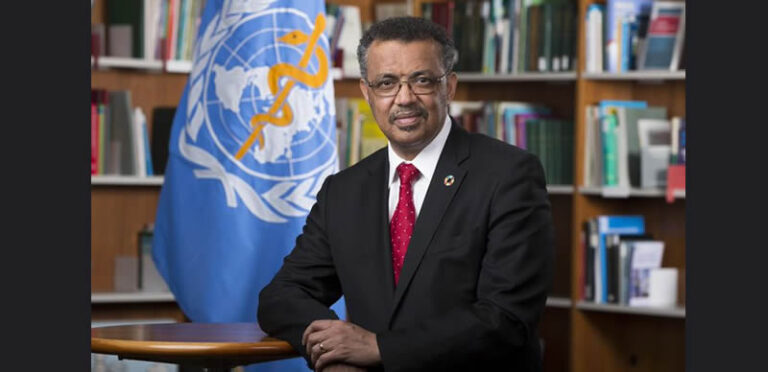A new report by the World Health Organisation and the United Nations Children’s Fund has shown that 14.3 million children worldwide have never received a single dose of any vaccine.
The figure is four million more than the 2024 target needed to stay on track with Immunisation Agenda 2030 goals, and 1.4 million more than in 2019, the baseline year for measuring progress.
The report released on Tuesday noted that in 2024, 89 per cent of infants globally – about 115 million – received at least one dose of the diphtheria, tetanus and pertussis (DTP)-containing vaccine, and 85 per cent – roughly 109 million – completed all three doses, according to new national immunisation coverage data.
“Compared to 2023, around 171,000 more children received at least one vaccine, and one million more completed the full three-dose DTP series.
“While the gains are modest, they signal continued progress by countries working to protect children, even amid growing challenges.
“Still, nearly 20 million infants missed at least one dose of DTP-containing vaccine last year, including 14.3 million ‘zero-dose’ children who never received a single dose of any vaccine. That’s 4 million more than the 2024 target needed to stay on track with Immunisation Agenda 2030 goals, and 1.4 million more than in 2019, the baseline year for measuring progress,” the joint data stated.
The WHO Director-General, Dr Tedros Ghebreyesus, said, “Vaccines save lives, allowing individuals, families, communities, economies and nations to flourish.
“It’s encouraging to see a continued increase in the number of children being vaccinated, although we still have a lot of work to do. Drastic cuts in aid, coupled with misinformation about the safety of vaccines, threaten to unwind decades of progress.
“WHO remains committed to working with our partners to support countries to develop local solutions and increase domestic investment to reach all children with the lifesaving power of vaccines.”
It noted that children often remain un- or under-vaccinated due to a combination of factors, such as limited access to immunisation services, disrupted supply, conflict and instability, or misinformation about vaccines.
“Data from 195 countries show that 131 countries have consistently reached at least 90 per cent of children with the first dose of DTP vaccine since 2019, but there has been no significant movement in expanding this group.
“Among the countries that reached less than 90% in 2019, only 17 managed to increase their coverage rates in the past five years. Meanwhile, in 47 countries, progress is stalling or worsening.
“This includes 22 countries that achieved and surpassed the 90% target in 2019 but have since declined.
“The data shows conflict and humanitarian crises can quickly erode vaccination progress. A quarter of the world’s infants live in just 26 countries affected by fragility, conflict, or humanitarian crises, yet they make up half of all unvaccinated children globally. Concerningly, in half of these countries, the number of unvaccinated children has expanded rapidly from 3.6 million in 2019 to 5.4 million in 2024, underscoring the need for humanitarian responses to include immunisation.
“Immunisation coverage in the 57 low-income countries supported by Gavi, the Vaccine Alliance, has improved in the past year, reducing the number of un- and under-vaccinated children by roughly 650,000. At the same time, signs of slippage are emerging in upper-middle- and high-income countries that have previously maintained at least 90 per cent coverage. Even small declines in immunisation coverage can dramatically raise the risk of disease outbreaks and place additional strain on already overstretched health systems,” it highlighted.
“The good news is that we have managed to reach more children with life-saving vaccines. But millions of children remain without protection against preventable diseases, and that should worry us all. We must act now with determination to overcome barriers like shrinking health budgets, fragile health systems, along with misinformation and access constraints because of conflicts. No child should die from a disease we know how to prevent”, said UNICEF Executive Director Catherine Russell.
Despite these challenges, countries – especially those supported by Gavi – continue to introduce and scale up vaccines, including against human papillomavirus (HPV), meningitis, pneumococcal disease, polio, and rotavirus.
For example, large national scale-ups of the HPV vaccine and revitalisation efforts in countries that have previously introduced the vaccine have boosted global coverage by four per cent in the past year. In 2024, 31 per cent of eligible adolescent girls globally received at least one dose of the HPV vaccine – most doses were administered in countries using a single-dose schedule. While far from the 90 per cent coverage target by 2030, it represents a substantial increase from the 17 per cent coverage in 2019.
“In 2024, lower-income countries protected more children than ever before, with coverage rates increasing across all Gavi-supported vaccines,” said Dr Sania Nishtar, CEO of Gavi, the Vaccine Alliance. “Yet population growth, fragility and conflict present major hurdles to achieving equity, leaving the most vulnerable children and communities at risk. Continued commitment from governments and partners will be critical to saving lives and protecting the world from infectious disease threats.”
The data revealed that coverage against measles also improved, with 84 per cent of children receiving the first dose and 76 per cent receiving the second dose, which shows a slight increase from the previous year.
“An estimated two million more children were reached in 2024, but the overall coverage rate is far below the 95 per cent needed in every community to prevent outbreaks.

